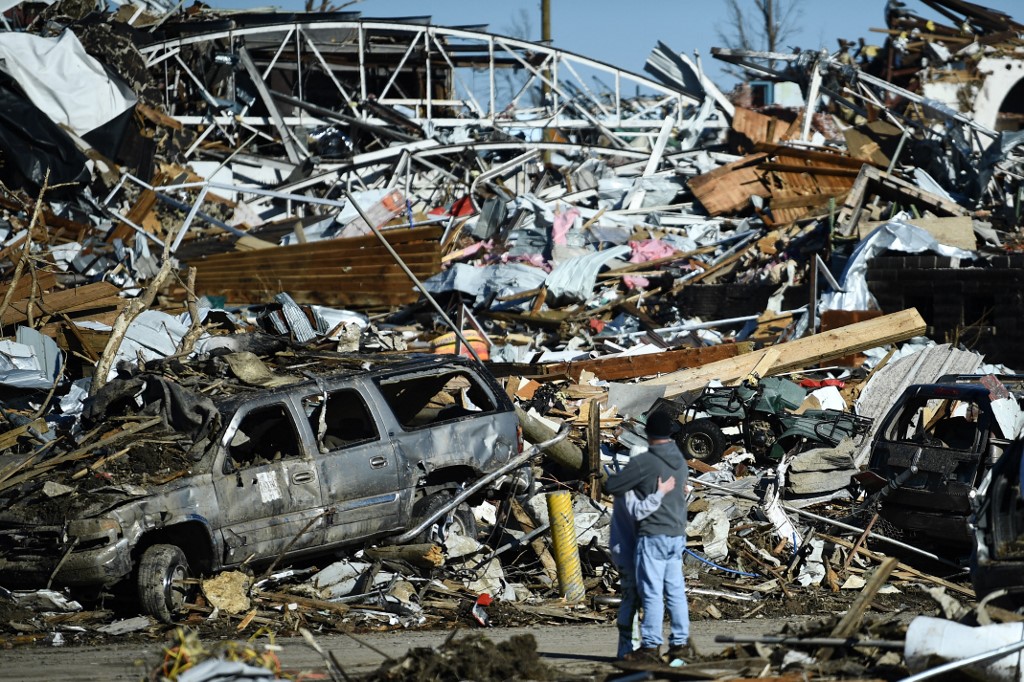
WASHINGTON D.C., United States (AFP) – More powerful, destructive, and deadlier storms will be the “new normal” as the effects of climate change take root, the top US emergency management official said Sunday after massive tornadoes ravaged six states.
Meteorologists and other scientists have long warned of the growing intensity of weather events like storms, fires and flooding.
But the crisis hit home in a terrifying way overnight Friday into Saturday when more than two dozen twisters raked across large swaths of the American heartland, leaving more than 90 people dead, dozens missing and communities in ruin.
“This is going to be our new normal,” Deanne Criswell, head of the Federal Emergency Management Agency, told CNN’s “State of the Union” as she did a round of national Sunday morning talk shows before she headed to Kentucky to assess the damage and help coordinate the federal response.
“The effects that we’re seeing from climate change are the crisis of our generation,” the FEMA chief added.
Criswell warned of the challenge that the United States faces in addressing such severe weather events.
“We’re seeing more intense storms, severe weather, whether it’s hurricanes, tornadoes, wildfires,” she said on ABC’s “This Week.”

“The focus I’m going to have is, how do we start to reduce the impacts of these events?”
The tornado that reduced several towns to rubble was a gargantuan twister. It rumbled along the ground for over 200 miles (320 kilometers), one of the longest, if not the longest, on record.
US President Joe Biden said Saturday the storm system was likely “one of the largest tornado outbreaks in our history.”
And while he stressed that the impact of climate change on these particular storms was not yet clear, “we all know everything is more intense when the climate is warming — everything.”
Scientists have stopped short of conclusive determinations that more violent storms are the result of climate change, but they agree that evidence is building.

One paper published recently by scientific association AGU says its analysis “suggests increasing global temperature will affect the occurrence of conditions favorable to severe weather.”
Daniel Swain, a UCLA climate scientist, tweeted Saturday in response to the study, saying that while the effect of climate change on severe weather like tornadoes is not well established, “there is a growing body of research (including this late-breaking paper) suggesting that warming likely does increase such risks in many regions globally.”
© Agence France-Presse








